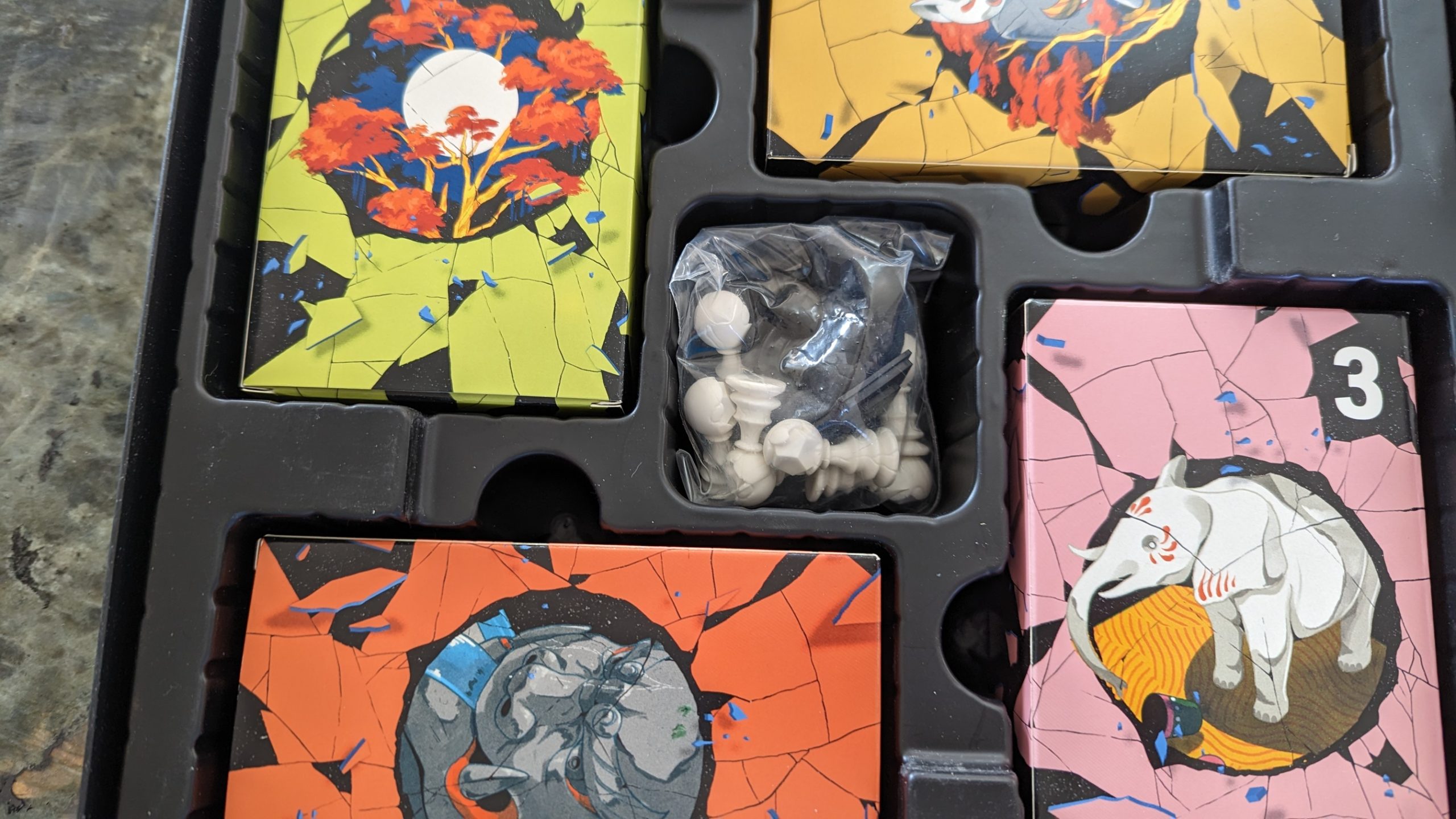
The moment I opened That Time You Killed Me, I had a bone to pick with it. Like most board gamers, I have a ritual around my new games. I had moved my office table and opened my drawer of baggies, ready to punch some cardboard and organize the bits and bobs. To my horror, everything was already contained either in the central bag that had the basic black and white game pieces, or in the four tuck boxes.

Reading the rulebook, I was immediately impressed with how it utilizes the (admittedly thin) time travel theme to explain the otherwise unintuitive mechanics in a way that is easy to grasp. On your turn, you’re going to pick a pawn from the board with your focus token to perform two actions with. You can spend an action to move one square orthogonally, pushing any enemy pawns back if you’d enter their space. If this would push them off the board, you capture them, and if it would push an enemy pawn into another enemy pawn, you capture both. The other option is to time travel, essentially moving pawns between the game’s three boards that represent past, present, and future. Moving forward in time is simple enough: move your chosen pawn to the same space on the next board to the right. Moving backwards is where things get tricky: you move your pawn to the next board on your left, but because time travel is weird, you leave a duplicate pawn behind. If you don’t have any pawns left in your supply from traveling back too much or being captured, you cannot move back in time. After performing your two actions, you end your turn by moving your focus token to another board, and check to see if you’ve won by eliminating your opponent from two boards.

If that sounds like it’s barebones, and will inevitably lead to stalemate shoving matches, that’s because it is and does. However, without going into spoilery specifics, the chapter boxes elevate gameplay by introducing pieces and mechanics that allow you to take actions on one board that can dramatically alter the state of the others.
That Time You Killed Me
Great
The basic ruleset of That Time You Killed Me is simple and uninteresting, which allows them to be a perfect vehicle for the mechanics introduced in the chapter boxes, like the crackers on a charcuterie board.
Pros
- Great use of theme in an abstract game to make the rules grokable
- Fun and interesting to see how chapters' mechanics change the game
Cons
- Undeniably an abstract. If you need theme in your games, this isn't for you
- Don't play with just the basic rules and no chapters, that game is legitimately bad
